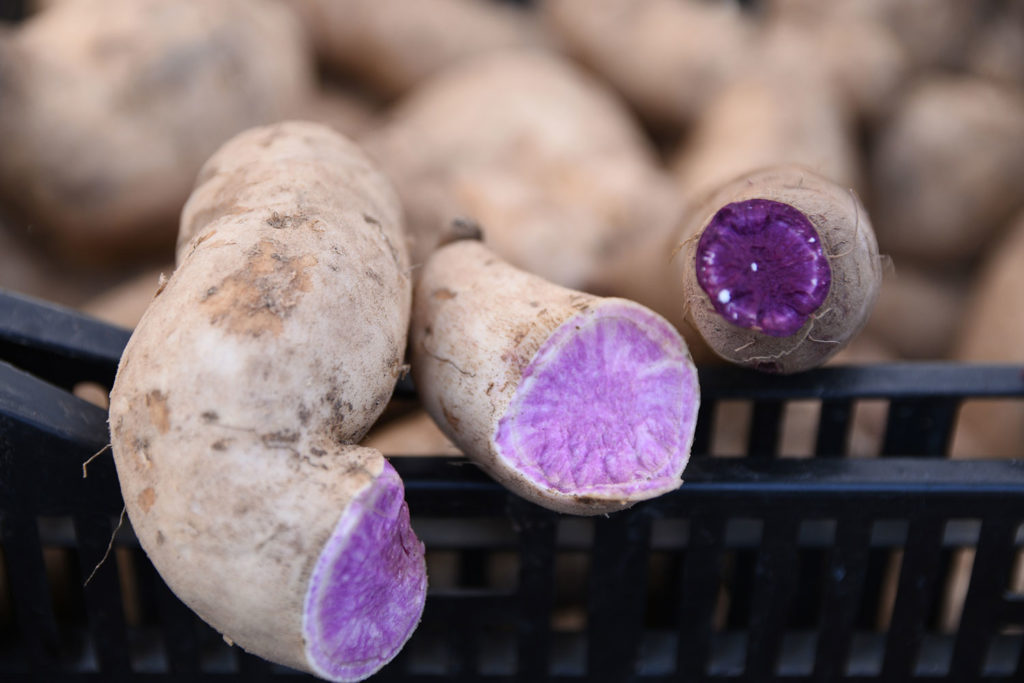Sweet potatoes

This popular tuber is believed to have originated in Central or South America. There is evidence of its domestication in Central America 5,000 years ago, and parts of Polynesia as far back as 1,000 AD. Sweet potatoes grow best in tropical, temperate weather and they do not tolerate frosts or droughts. Depending on the cultivar (and there are over 400 varieties), the sweet potato root matures in two to nine months. They are sown using vine cuttings, rather than seeds, and are easy to plant.
Sweet potatoes are nutritionally rich in dietary fiber, beta-carotene, complex carbohydrates, and other vitamins and nutrients. They can come in a variety of colors, with beige, orange, red, or purple flesh. The popular orange-fleshed variety commonly referred to as a “yam” in North America is actually a sweet potato. (Yams are botanically different from sweet potatoes. Sweet potatoes are in the Convolvulaceae or bindweed family, while yams belong to the family Dioscoreaceae.)
North Carolina is the leader of sweet potato production in the United States (with California, Mississippi, and Louisiana fighting for a close second) and globally, China takes first place. While sweet potatoes are best known for their root, the leaves and shoots are also edible. In Korean cuisine, the sweet potato starch is used to make cellophane noodles and in South America, red sweet potatoes are combined with lime juice to make a dye for cloth.
